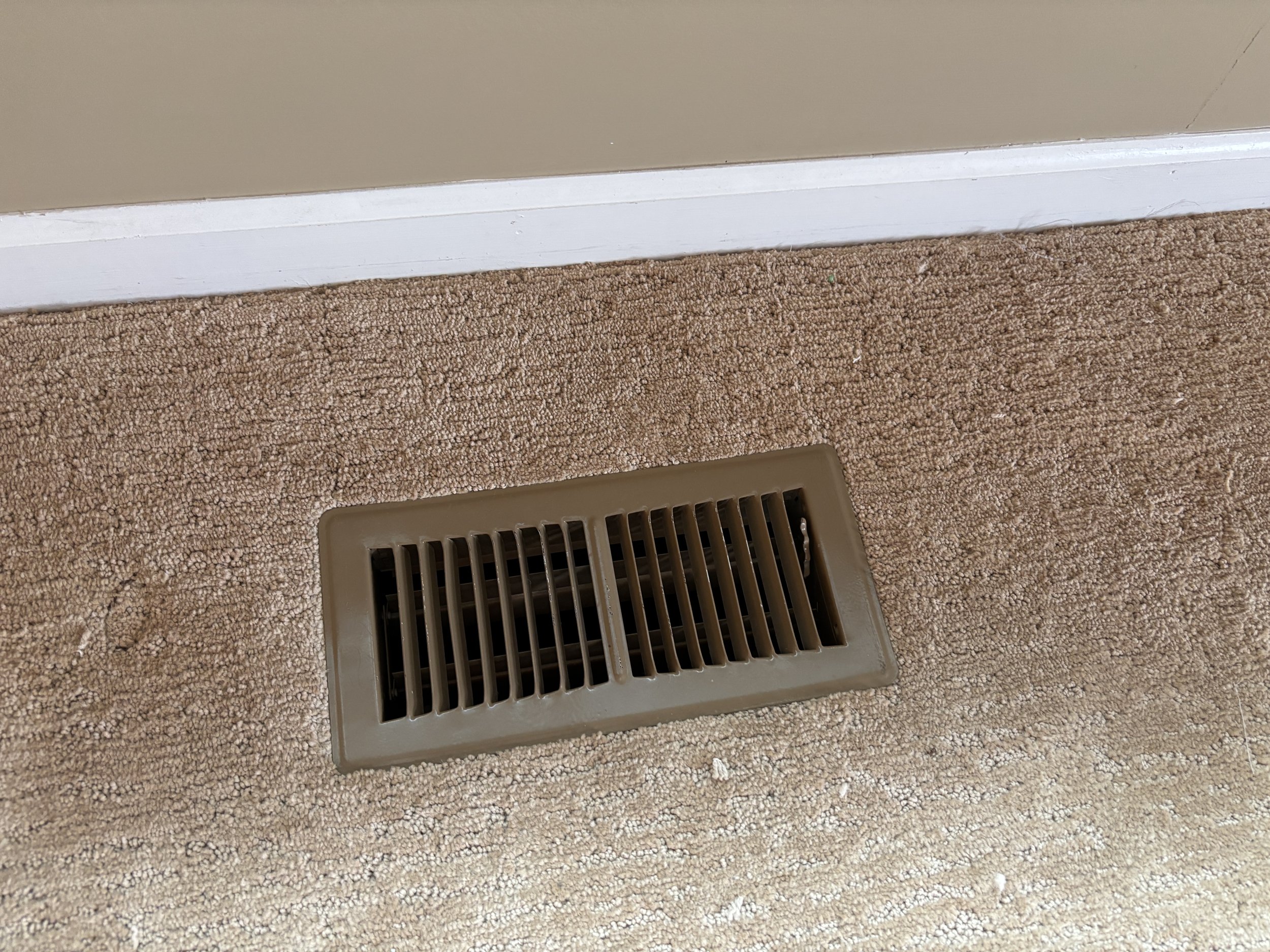Loose Installation or Delamination?
The Story
The claim form says: “Installer says carpet has been restretched 3 times. Carpet is delaminated.”
When I arrive at the home, I ask the homeowner what the concern is.
“The carpet is buckled up over here, and the installer has been here two other times.”
“To stretch this carpet?” I ask.
“No, two other rooms,” the homeowner replies. “The last time he looked at this one, he said it’s delaminated and can’t be stretched.”
Now I do the inspection, I see buckles in trafficked and untrafficked areas, a loose installation.
It’s puffy at the baseboards, it’s puffy around doorframes, it’s puffy around large pieces of furniture. I step on a buckle and the carpet on each side of the shoe puffs up which, means the carpet has good dimensional stability, it is not delaminated.
I investigate at different walls by disengaging the carpet from the tackstrip to look at the secondary backing. Where the width of the carpet is attached to the tackstrip the holes in the secondary backing are a rounded shape
Round Holes
Not stretched in properly
compared to elongated holes.
Elongated Holes
Properly stretched installation
I then go to where the carpet is stretched in the length, and also find round holes in the secondary backing. This indicates to me that the carpet was not power stretched properly.
How can you tell if it is buckling or delamination? Using high intensity, low level light casting across the face of the carpet can help you see the wrinkled carpet. Placement of the wrinkles can help determine if it is buckles or delamination. Delamination will look different than a loose installation. Loose installation will have large buckles that are far apart. Delamination will have ripples that are close together.
Delamination can be caused by a number of different factors. Overuse of dry solvents during cleaning, improper drying during a water loss, heavy rolling traffic – most especially motorized wheelchairs. A test that I perform is by taking my fingers and pushing it across the ripples. Pushing the ripples across the carpet you will find the ripples will stop where it is no longer delaminated. Inserting a carpet awl through the pile and primary backing, and manipulating the carpet, it will show the carpet to be flimsy.
Depending on where the concern is, disengaging the carpet to look at the backing can also show crumbling latex on the face of the cushion. Over application of latex from the manufacturer can cause delamination. The latex was applied too heavily and didn’t cure as it usually would.
Delamination can happen because of untreated urine contamination.
It’s not the urine itself, it’s what happens as urine ages. Urine from animals and humans, come out acid, as it breaks down it becomes alkaline. You know the ammonia odor that comes out of the litterbox. Those of you who have or have had small children and the diapers that sit around just a bit too long – just the wet ones – start to smell like ammonia. The pH of ammonia is 12. It’s the ammonia that breaks down the latex in the back of the carpet causing delamination.
Can delamination be fixed – sure if it’s localized. But delamination can only be repaired from the back of the carpet, so the carpet has to be disengaged. Decontaminate what caused the delamination in the first place, allow that to dry. Carefully apply seam sealer – not too much, you don’t want it to soak through! Spread it around using a carpet scrap or small brush and allow it to dry. Then reinstall the carpet.
Buckles as stated before will look puffy around baseboards, doorframes and heavy furniture. Pressing on these buckles, the carpet will rise up around where it is pushed down. Buckles can be stretched out and usually appear because the carpet was not stretched properly the first time it was installed. There are standards for how carpet is to be installed based on CRI 104 CRI 104 - STANDARD For INSTALLATION of COMMERCIAL CARPET and CRI 105 CRI 105 - STANDARD For INSTALLATION of RESIDENTIAL CARPET it is MANDATORY that carpet is power stretched.
There are guidelines on how to best restretch carpet:
Carpet Wrinkles (“Buckles” or “Bubbles”) Technical Bulletin
Guidance for Restretching to Remove Buckles, Wrinkles, and Bubbles
Key tips during a restretch:
Carpets are harder to stretch across the width than the length.
You don’t always need to stretch the whole room—just enough to remove the buckle.
Stretch in the same direction as the buckle to build tension, then at an angle to eliminate the buckle and stabilize the width.
Remove all furniture before stretching. (Sliders under a bed or piano help.)
Avoiding a Stretch-By
A stretch-by happens when you stretch toward an immovable object like a wall or floor vent and have to patch the carpet—never a good look.
Fold the carpet back from the wall.
2. Install tack strip on the room side of the floor vent.
3. Use a straight edge to cut the carpet on the wall side of the vent.
4. Stretch the carpet and hook it to the tack strip.
5. Seam in the removed piece with hot melt seam tape or a Kool Glide.
6. Cool the seam with the Seamer Down Now, vacuum cooling tool
7. Replace floor vent
BOTTOM LINE
Knowing the difference between delamination and buckling can help resolve issues or diagnose the repair options.
No doubt, there is money to be made restretching and repairing delamination in carpet. There is no right or wrong way to restretch carpet or repair delamination, it is critical however, that you exercise good judgment. Having the room empty as much as possible is key and makes it easier. If needed, you can always put slides under the giant master bed or a baby grand to move them. Delamination is more tricky, and can only be repaired from the back of the carpet.























